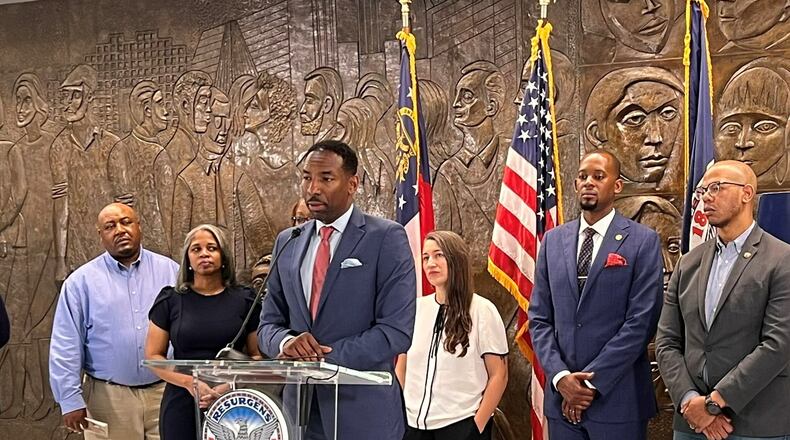Atlanta Mayor Andre Dickens announced Thursday the results of a survey that suggests there are fewer homeless people in the city than before the pandemic.
Partners for Home, a nonprofit organization created by the city in 2013 that works to combat homelessness, reports a 38% decrease in the homeless population since 2020 in their Point in Time Count, which identifies people who were homeless on one night in January of each year.
In January 2022, volunteers counted 2,017 homeless people, with just 640 living on the streets. Both numbers are the lowest the annual count has recorded. The 2022 street survey was conducted the night of Jan. 24, a Monday. Daytime surveys of shelters were conducted Jan. 25-27.
“We were surprised to be honest, to see the dramatic reduction in the numbers,” said Cathryn Vassell, chief executive officer for the organization.
The first annual count in 2015 said there were 4,317 homeless people in Atlanta, including more than 1,000 living outside of shelters, according to Partners for Home data. In 2020, just months before the pandemic hit, the count indicated 3,240 homeless, with 939 unsheltered. Due to the pandemic, there was no 2021 count of the unsheltered.
The decrease is due to a number of strategies the organization has tried, such as housing investments, Vassell said. In 2017, $50 million administered by the organization was invested into supportive housing for families, youth, and other populations, Vassell said.
Atlanta’s mayor said he wants to continue the city’s efforts.
“While we’ve made significant strides, no one is satisfied when there’s anyone sleeping on the streets. So we are doubling down in our commitment to fight homelessness,” Dickens said Thursday at City Hall, adding that the city is investing over $25 million in American Rescue Plan Act and state funds to further combat homelessness.
More notable info from the 2022 report:
* 37% of people surveyed said they struggled with mental illness.
* 32% reported substance abuse.
* 85.4% were 25 or older.
* 6.5% were considered “youth,” meaning they were 18-24.
* 8.1% were under 18, but only one person under 18 was not with a parent or guardian.
* 12.4% were military veterans.
* Of those surveyed, 84.6% were Black, 11.5% white, 3.9% Hispanic.
About the Author
Keep Reading
The Latest
Featured



